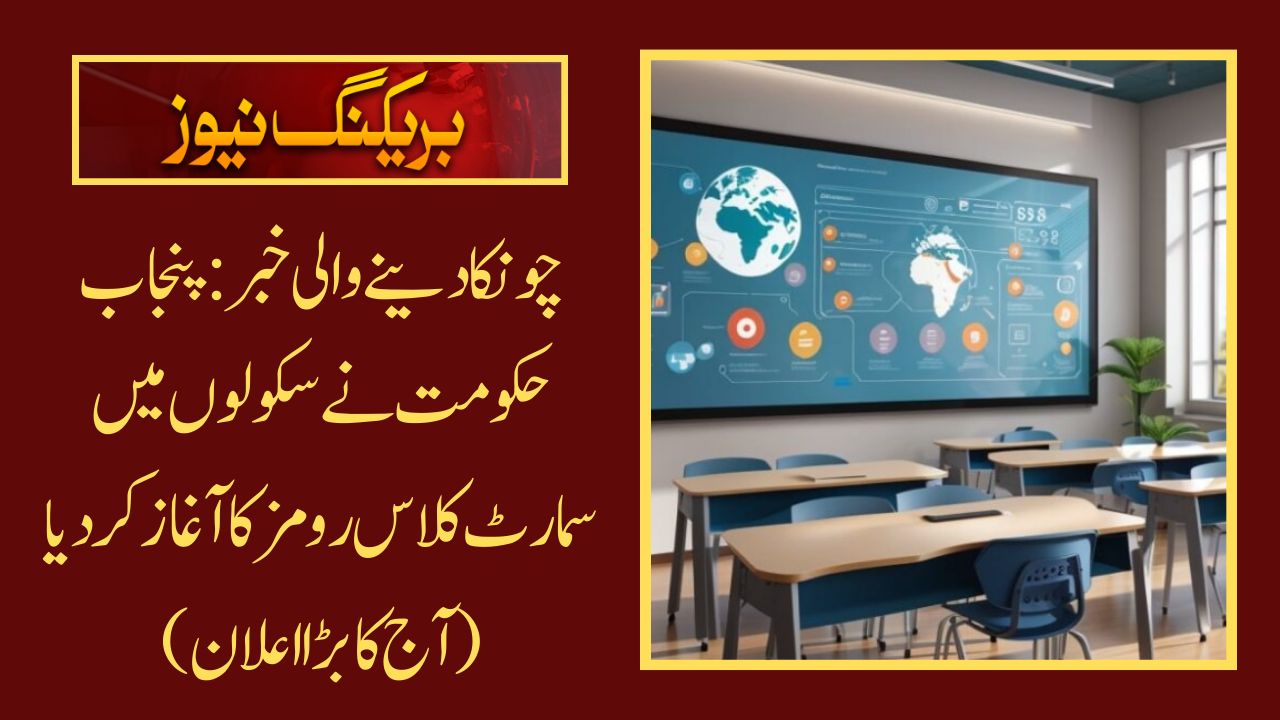Punjab Government Launches Smart Classrooms
In a game-changing move, the Punjab Government has introduced smart classrooms across the province, aiming to revolutionize education through modern technology. This major initiative is set to replace traditional teaching methods with a more interactive and engaging approach, preparing students for a digital future.
Objectives of the Smart Classroom Initiative
The core objectives of the Smart Classroom initiative include:
- Modernizing Education: Integrating technology to upgrade the educational infrastructure in Punjab.
- Inclusive Access: Ensuring equal educational opportunities for students from various socio-economic backgrounds.
- Enhanced Engagement: Boosting student participation with digital and interactive tools.
- Bridging Gaps: Addressing educational disparities between urban and rural regions.
- Digital Preparedness: Equipping students with the skills needed to thrive in a digital economy.
Also Read: Benazir Income Support Program
Features of Smart Classrooms
The smart classrooms in Punjab are designed to create an engaging and interactive learning environment. The main features include:
| Feature | Description |
|---|---|
| Interactive Whiteboards | Teachers can display and manipulate educational content in real time. |
| Multimedia Projectors | Enhances learning with high-quality visuals and videos. |
| Digital Textbooks | Students access textbooks and educational applications via personal digital devices. |
| High-Speed Internet | Supports seamless online learning and research. |
| Online Quizzes | Facilitates real-time assessments of student performance, providing immediate feedback. |
These features aim to create a dynamic, tech-driven educational system that improves learning outcomes.
Also Read: BISP Kafalat
Benefits and Challenges
Benefits:
- Enhanced Learning Experience: Smart classrooms make learning more attractive by incorporating multimedia and interactive tools.
- Self-Paced Learning: Students can explore topics at their own pace, fostering individualized learning.
- Updated Content: Digital resources reduce reliance on physical textbooks and allow for real-time content updates.
- Bridging the Urban-Rural Divide: This initiative provides students in remote areas with the same digital learning opportunities as their urban counterparts.
Challenges:
Despite the numerous benefits, the initiative faces several challenges:
- Internet Connectivity: Some rural areas still struggle with consistent internet access, hindering the effectiveness of online learning tools.
- Resource Availability: Ensuring that all students have access to digital devices and reliable internet remains a critical issue.
Also Read: Mobile Clinics Improving Healthcare
Conclusion
The Punjab Government’s smart classroom initiative is poised to transform the educational landscape by incorporating modern technology into the learning environment. However, addressing challenges such as internet connectivity and equal resource distribution is key to the success of this program. By overcoming these barriers, Punjab aims to prepare its students for a thriving future in the digital world.
Also Read: Laptop Scheme 2024
FAQs about Punjab Smart Classroom Initiative
- What is the purpose of the Smart Classroom initiative?
The initiative aims to modernize education by integrating technology to enhance student learning and engagement. - What are the key features of smart classrooms?
Smart classrooms feature interactive whiteboards, multimedia projectors, digital textbooks, high-speed internet, and online quizzes for real-time assessments. - How will smart classrooms benefit students?
They offer an enhanced learning experience, self-paced learning opportunities, and bridge the urban-rural education gap. - What challenges does this initiative face?
The main challenges include inconsistent internet connectivity and ensuring all students have access to the required digital resources. - How does this initiative help bridge the urban-rural divide?
By providing equal access to digital learning tools, students in remote areas can gain the same education and skills as those in urban centers. - Will students receive personal devices for learning?
Yes, digital textbooks and educational apps will be accessible on personal devices provided to students. - How will student performance be assessed in smart classrooms?
Real-time online quizzes and assessments will allow teachers to track student performance instantly. - When will smart classrooms be implemented in all schools?
The implementation is underway, with more schools gradually adopting the system province-wide. - How can the issue of internet connectivity be resolved?
The government is working on improving infrastructure to ensure consistent high-speed internet access in rural areas. - Will traditional teaching methods be completely replaced?
Smart classrooms aim to complement traditional methods, not completely replace them, by offering more dynamic, tech-driven learning tools.
Read More: Ehsaas 8171 BISP News


